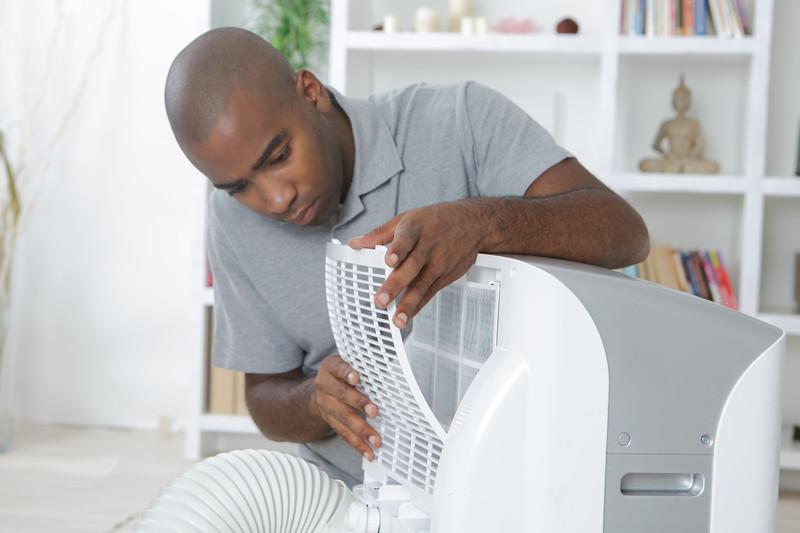Are Portable Air Conditioners Any Good?

As summer winds down, we’re getting closer to the time when we’re winterizing central air conditioning, or taking those old window units out of their perches and putting them in storage. If you’ve had a window unit for a while, you might be eyeing a replacement — and taking a closer look at the portable air conditioners that are an increasingly common sight in home improvement stores. Question is, are they worth the money? While the short answer is “no,” it’s also a bit more complex than that.
Noise
Regardless of type, air conditioners each have three main parts: a fan, a compressor, and coils. We’ll return to the coils later, but for now let’s focus on the fan and compressor. Central air and window units will both locate the fans indoors — something has to move a high volume of air — but they locate the compressor outdoors. By contrast, a portable unit locates everything in one place: the room that’s being cooled. So instead of a low hum when the compressor kicks in, you’re more likely to hear a significant increase in volume when a portable unit’s compressor turns on.
Efficiency
It’s increasingly common for portable units to display two BTU ratings. That’s because air conditioners are moving the heat and humidity in the air to the outdoors, and actually work a bit better when they’re moving hotter air (there’s a more in-depth explanation YouTube here). In brief, portable units create negative pressure indoors, which pulls in warmer outdoor air. They also contribute to indoor warming thanks to their exhaust hoses, so they’re spending considerable energy re-cooling the air they just cooled. Worst of all, they use more power per BTU than equivalent window units, so they cost more to run.
Weight
Window units are heavy, but portable units are heavier still. “Portable” may end up a bit of a misnomer, since the wheels tend not to work well on deeper carpet pile, or on carpeting with thicker padding underneath. And the less said about getting them up and down stairs, the better.
Drainage
Any air conditioner is cooling the air at least in part by removing humidity. We don’t usually give this much thought, since a central air units have drain pipes that simply drain on the ground, and window units will just drip the water onto the sidewalk. Portable units often have a reservoir that can have a drainage tube attached, or that must be manually drained periodically (which means tipping the machine, or using a shop vac to take care of the job a bit faster).
Cost
There’s no real cost savings when buying a portable unit instead of a window unit. And while the up-front cost is lower than central air, we’ve already seen that the lower efficiency and higher energy use is likely to add up to higher energy bills over the life of the appliance — without even providing the same cooling capacity as a central air unit, which may be a bit more expensive to run but is also more efficiently cooling a much larger area.
Here’s where things get complicated. If you’re deciding whether to buy a window unit, a portable air conditioner, or to finally take the plunge on central air conditioning installation, it helps to look at these choices as a continuum. Each has its advantages, but central air comes out on top, all else being equal.
With that being said, there are times when central air isn’t possible, whether you’re cooling the garage while you work at your workbench or cooling a room that never had ducting installed. In those cases, a window unit is clearly a better choice than a portable unit. If you live in the Sacramento area and have questions, call Contact Ace Plumbing Heating & Air Conditioning for answers you can trust.



